Recently, the American Institute of Architects (“AIA”) published its decennial update to the AIA forms most commonly used by contractors, owners, and design professionals. In total, AIA updated fourteen of its construction contract forms, including the industry-standard Owner-Contractor forms, such as the A101 – A105 base contracts and A201 General Conditions, as well as the Owner-Architect forms in the “B-series” of documents (i.e., B101 – B105). Due to their preeminence among the AIA suite of documents, some of the more important changes to the A101, A102, and A201 construction documents are discussed below. If you have any questions or need additional information, please contact David Tolin or John Warren at Cokinos|Young.
A101 and A102
The AIA A101 and A102 forms are the long-form construction contracts intended for use between Owners and Contractors. The 2017 changes are very similar across these two documents, though the different billing methods (i.e., cost-plus vs. lump sum) lead to some slight differences. The important changes to both documents are:
- Contract Time. Both documents now adopt a menu-style approach to designation of the Commencement Date and the date for Substantial Completion. Contracting parties can select from a variety of options for the start date of the work, including date of execution, upon receipt of a notice to proceed, or some other date, and they can also now select between a date-certain for completion of the work or a specified number of calendar days. If the parties have agreed upon interim dates for partial completion of certain aspects of the work, the forms also now include a provision for express milestone dates (A101 §§ 3.1 – 3.3; A102 §§ 4.1 – 4.3).
- Liquidated Damages. Whereas liquidated damages were limited to a parenthetical reference in the 2007 forms, the 2017 documents now include two express provisions addressing liquidated damages. In substance, this is not a significant change, but in practice it may lead to a heightened focus on liquidated damages during the contract negotiation phase of projects. The original, parenthetical reference was more discrete and could be easily overlooked or ignored, while the new clauses may need to be negotiated and modified as needed (A101 §§ 3.33 and 4.5; A102 §§ 4.33 and 5.1.6).
- Cost of the Work. Articles 7 and 8 of the A102 define what costs incurred by the Contractor will be reimbursable as a “Cost of the Work.” The AIA 2017 update tweaks some of the language in these articles, but the majority of the changes are inconsequential. One important change is certain types of Contractor-employee compensation (e.g., bonuses, incentives, etc.) are moved from Article 7 to Article 8, removing them from the list of reimbursable costs. Also, there is now an express presumption that labor costs will not increase during the course of the project (A102 § 7.2.5). Perhaps offsetting these changes, self-insurance and captive insurer costs are now included as reimbursable Costs of the Work (though Owner approval is required) (A102 § 7.6.1.1).
- Payment Procedures. The provisions addressing payment procedures were significantly overhauled in both documents. AIA claims the new payment provisions are “simplified,” and for the most part they are. The new language is clearer and more concise, due in no small part to the decision to separate retainage language into its own section. The payment provisions now set forth a list of all items to be included in calculation of each payment, followed by a list of all items that should be deducted. In general, this is an improvement, but Contractors should be aware the list of items to be deducted from every pay application includes “any amount for which the Contractor does not intend to pay a Subcontractor or material supplier, unless the Work has been performed by others the Contractor intends to pay” (A101 § 5.1.6.2.3; A201 § 12.1.7.2.3). This language, formerly contained in the A201 General Conditions (at § 9.3.1.2), appears to prevent a General Contractor from seeking progress payments for self-performed work or overhead and profit. This language may be problematic, especially in light of its new placement as a specified deduction in the primary payment provisions of the A101 and A102.Retainage is now addressed in separate provisions (A101 § 5.1.7; A102 § 12.1.8), which is an improvement. However, both the A101 and A102 now provide for retainage billing upon substantial completion (A101 § 5.1.7.3; A102 § 12.1.8.3), which is at variance with Owner-obligations under Texas law. Because Owners are required to withhold retainage until at least thirty days after Final Completion of a project, this language should be revised or adjusted unless other accommodation is made for the protection of subcontractors and suppliers (e.g., bonding of the project).As noted above, the 2017 AIA updates treat the A101 and A102 somewhat differently due to their distinct billing methods (cost-plus vs. lump sum). The 2017 A101 now requires the Owner to pay the contract price “allocable to the work,” while references to percentages of completion and the schedule of values are eliminated from the calculation of payments (A101 § 5.1.6.1). Conversely, the 2017 A102 retains these references and adds some safeguards and cost controls for the protection of the Owner. For example, all costs that must be approved by the Owner must now be approved in writing prior to incurring the cost (A102 § 7.1.2), and the GMP must now be separately allocated to each portion of the work, including the contingency and the Contractor’s Fee (A102 § 12.1.5). Additional language was also added to address refinement and development of the Contract Documents after approval of the GMP (A102 §§ 5.2.5, 5.2.6).
- Termination for Convenience. The 2007 forms provided for recoupment by the Contractor of overhead and profit for work not yet completed in the event of a termination by the Owner for convenience. The new forms replace that compensation with an agreed “Termination Fee” whenever the Contractor is terminated for convenience. Parties will now need to agree in advance what this Termination Fee would be.
- Insurance. Insurance provisions for the A101 and A102 documents were previously comprised simply of a reference to the A201 General Conditions, which contained detailed insurance requirements in its Article 11. For the 2017 forms, the insurance provisions have been combined into a single, comprehensive insurance and bonds exhibit, to be attached as Exhibit “A” to either the A101 or A102 (the “short-form” contracts, such as the A104 and A105, continue to include insurance provisions in the main body of the contract). The insurance and bonds exhibit uses a checkbox system, offering various insurance options the parties can select from during the contract negotiation phase. This change reflects the common practice in the construction industry of creating separate insurance exhibits for each new construction contract.
- Electronic Data and Building Information Modeling. The new forms continue to emphasize the AIA E203-2013 Building Information Modeling (BIM) and Electronic Data Exhibit and insert additional clauses pertaining to use of that Exhibit (A101 § 9.1.4; A102 § 16.1.4; A201 §§ 1.6 – 1.8). Of particular note, where notice is required by the Contract Documents, the notice will be sufficient if delivered in accordance with the Electronic Data Exhibit. This could potentially lead to disputes over informal e-mails serving as proper notice, though the 2017 A201 still requires claims for additional money or time to be in writing and delivered by certified mail or courier with proof of delivery (A201 § 1.6.2).
A201
The AIA A201 form is the comprehensive “General Conditions” document for both the A101 and A102 base contract forms. Some of the important changes to the A201 are:
- Owner’s Financial Information. The requirements and obligations of the Owner to provide details regarding its financial arrangements for the project are now more comprehensive, and there are now provisions allowing the Contractor to refuse to proceed or to suspend work in the event the Owner fails to provide the required information (A201 § 2.2.2).
- Means and Methods. Where the Contractor determines specified means and methods to be unsafe, the Contractor previously had some protection because the 2007 A201 required the Architect to investigate and relieved the Contractor of responsibility if directed to proceed with Owner-required means and methods it deemed unsafe. In the 2017 A201, the Contractor is now required to propose alternate means and methods (rather than simply wait on the Architect for instruction) and proceed with those alternate means and methods unless the Architect objects to the proposed alternative. While this seems like a more pro-active approach, the result is a bit murky. What happens if the Architect does object? The 2017 A201 does not answer that question (A201 § 3.3.1).
- Warranties. All material, equipment, and other special warranties must now be issued in the name of the Owner or made transferable to the Owner (A201 § 3.5.1).
- Schedule. The Contractor is now required to include more information in its schedule submittal, including schedule milestone dates, apportionment of the work by construction activity, and the time required for completion of each portion of the work (A201 §3.10.1).
- Owner-Contractor Communication. Direct communication between the Owner and Contractor is now expressly authorized (as opposed to all communication being routed through the Architect, which was the 2007 standard). However, the A201 still requires that the Architect be kept informed of all project-related communications (A201 § 4.2.4).
- Changes. When the Contractor disagrees with whether a proposed change is a “minor change,” and believes the change will affect the Contract Sum or Contract Time, the Contractor can now refuse to perform the change until the disagreement is resolved or a Construction Change Directive is issued (A201 § 7.4).
- Liens. Lien waivers and releases from subcontractors must now be submitted with each Application for Payment (A201 § 9.3.1). If the Owner pays all amounts due as obligated under the contract, the Contractor must now indemnify and defend Owner against any lien claims or claims for payment by Subcontractors (A201 § 9.6.8). These changes reflect fairly common practices among sophisticated Owners in the construction industry.
- Termination by Contractor. Termination of the contract by the Contractor (for cause) now entitles the Contractor, in addition to previous remedies, to overhead and profit on the work not yet executed at the time of termination (A201 § 14.1.3).
- Termination for Convenience. As with the A101 and A102, the A201 now assumes the Contractor will be paid a Termination Fee for any convenience termination by the Owner (A201 § 14.4.3).
- Dispute Resolution. A new timing mechanism was added to prevent mediated disputes from becoming stale. After the Initial Decision Maker has decided a disputed matter and that matter has been mediated, either party may demand that the other party file its claim in either arbitration or litigation. If the other party does not file a claim within 60 days of the demand, then both parties waive their rights to arbitration or litigation, and the initial decision becomes final (A201 § 15.3.3).
This is not intended to address every change made to the documents discussed, nor is it intended to constitute legal advice.

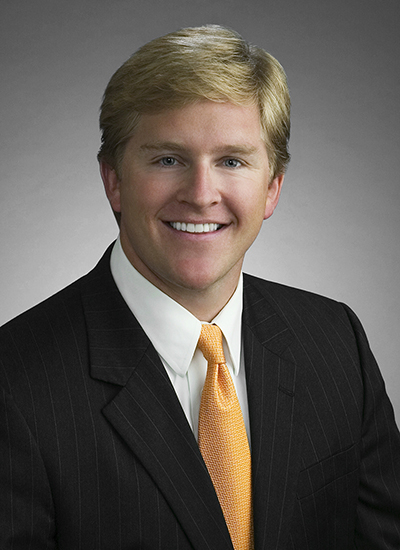

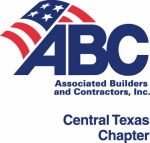
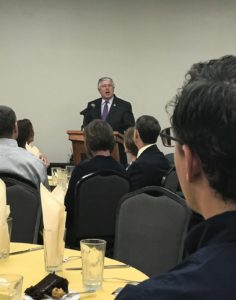



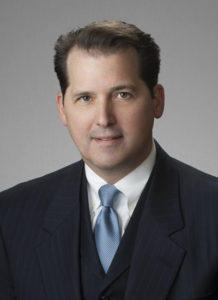

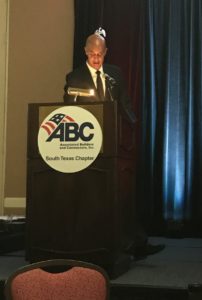
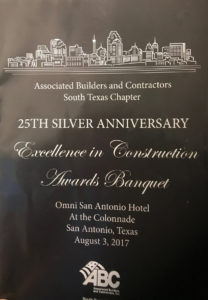


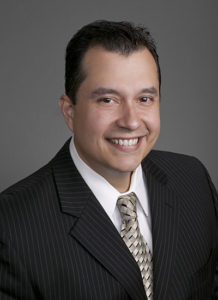
Recent Comments